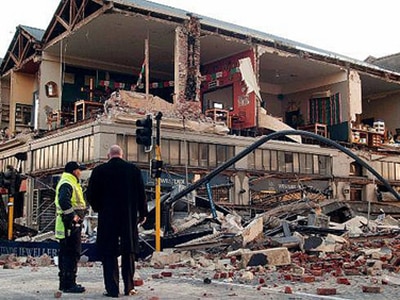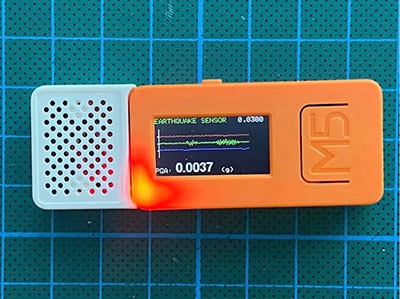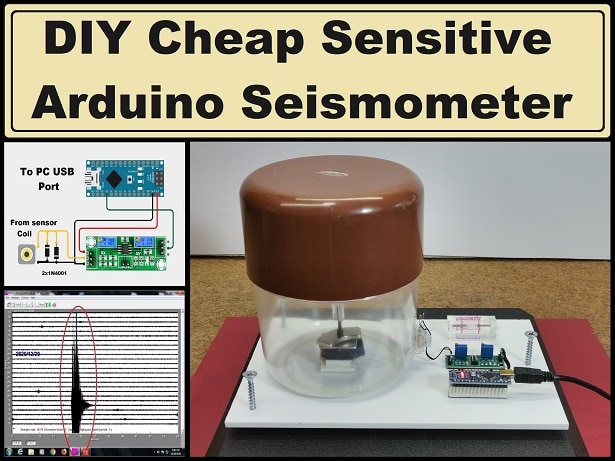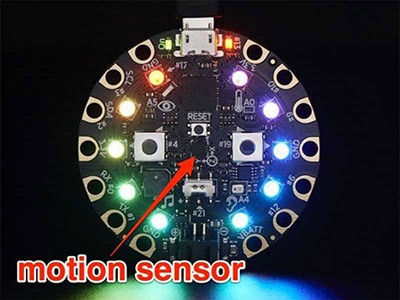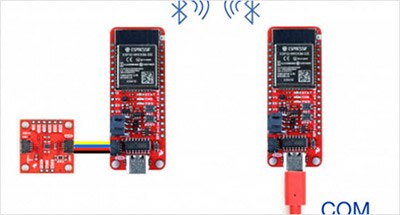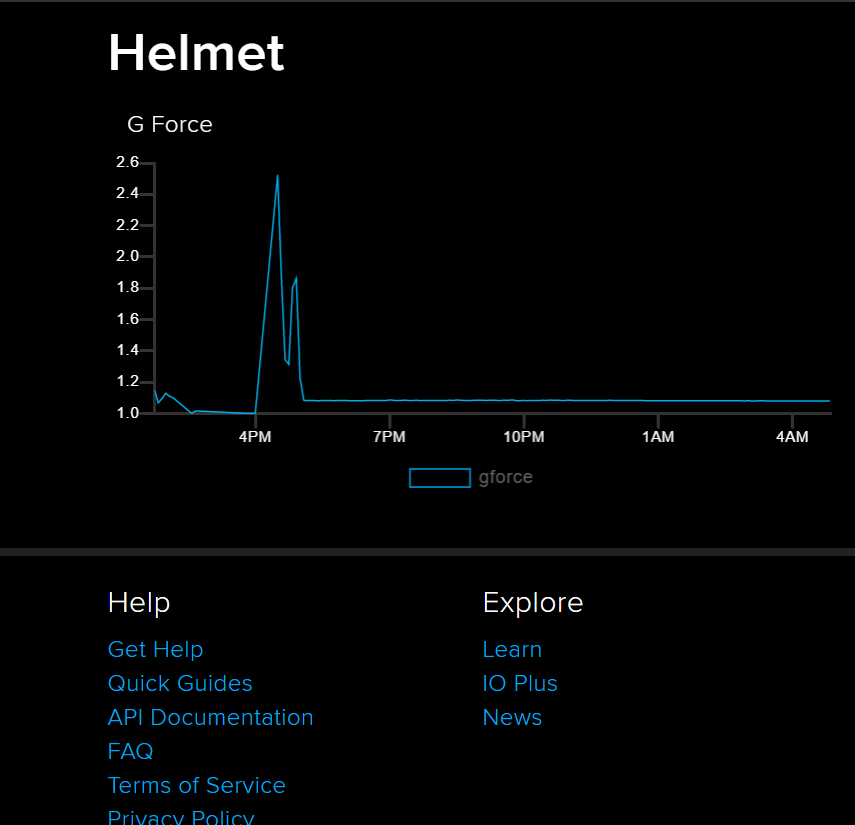Arduino Earthquake Alarm and Protection System With D7S Seismic Sensor
2025-01-07 | By Mirko Pavleski
License: General Public License Arduino
Earthquakes are extremely common events around the world. On average, there are fifty earthquakes a day, around twenty thousand a year. Many are mild and go unnoticed, but some are catastrophic. It is not always possible to predict when a disastrous event will occur. Using special sensors, designers can make their systems safer and minimize the risk of secondary damage from earthquakes by safely shutting down critical devices and halting their operation. In this project, I will describe a device that uses this type of sensor.
Specifically, the sensor I am using is an Omron product and its designation is D7S. A key feature of the sensor is its ability to distinguish between actual seismic activity due to an earthquake and signals due to other causes. When an event occurs, the D7S uses a unique Spectral Intensity (SI) calculation algorithm to distinguish between seismic activity and other types of motion. The sensor includes a three-axis accelerometer that can take measurements to calculate the SI (spectral intensity) value and determine the magnitude of the earthquake. Spectral intensity (SI) correlates highly with damage to structures. These facts are the biggest difference between this sensor and, for example, the MPU6050, which, by the way, reacts equally to all types of shocks and vibrations generated from various sources.
And first of all, let me clarify that this sensor is not intended and sensitive enough to make a seismometer, but its main purpose is to turn off a device during a strong earthquake, which would reduce the damage caused. For example, during a major earthquake, the gas supply to a certain building would be turned off because there is a risk of its collapse, or the power lines would be turned off. To control and read the data from the sensor, I use an Arduino Nano microcontroller board and the appropriate library.
As you can see, the device is very simple and consists of several components.
- Omron D7S seismic sensor
- Arduino Nano microcontroller board
- Buzzer
- 6 LEDs with appropriate current limit resistors
- and optionally small 5V relay module
The code is based on Alessandro Pasqualini's excellent library, in fact, in one of the examples I added LEDs, a buzzer for signaling, and a relay module for controlling other devices.
First, let me explain how the device works. After turning it on, we need to wait a certain amount of time, during which communication and initialization of the sensor are established. During that time, the device should be in a state of complete standstill. Then the white LED lights up, which is a sign that the device is ready to react to a possible shock. We can also observe this startup process on the serial monitor if we connect the Arduino to a PC.
These 4 LEDs are for indication of a possible earthquake. The intensity of the movement is displayed in units of PGA (peak ground acceleration) and is expressed in m/sec^2. Peak Ground Acceleration represents the intensity of the shaking at a specific point on the Earth's surface. It is used to assess the potential for earthquake damage to structures and is particularly relevant for engineering and construction, as buildings and infrastructure are designed to withstand certain accelerations. It is interesting to mention that this sensor has its own memory where it stores previous events. In this case, it displayed the strongest earthquake intensity that occurred in the previous period since the device was turned on. Depending on that value, the corresponding LED lights up.
And the last largest LED is activated in case the sensor detects a shock in which there is a high probability that the object on which the sensor is mounted will be significantly damaged or collapse. At the same time, the relay module and the buzzer are activated.
Now let's see how the device works in simulated, approximately realistic conditions. For this purpose, I will move this entire structure with a relatively low frequency to be close to a real earthquake. We assume that this is some kind of building. I will connect a lamp to the relay that will simulate an electric control valve for supplying gas to the building.
I will start shaking the object. We see that the first LED lights up. With stronger shaking, the next LED is activated. If in the meantime tremors occur that are of a weaker intensity than this one (which is 0.2m/s‚2), the same diode that signals the strongest tremor so far remains lit. Only if a stronger tremor occurs, the next LED will light up.
In the event of a very strong earthquake that would pose a danger to the structure, the largest red LED lights up and at the same time the buzzer is activated, as well as the relay that turns off the lamp (actually the imaginary valve).
And finally, a short conclusion. The D7S is a very compact surface mount module and can be easily incorporated into any system due to its size. Its low current consumption – only 90 microamps in standby, and also allows its integration into battery-powered systems. The main advantage over standard MEMS Acceleration Sensors is in their ability to distinguish between actual seismic activity due to an earthquake and signals due to other causes.
/*
Copyright 2017 Alessandro Pasqualini
Licensed under the Apache License, Version 2.0 (the "License");
you may not use this file except in compliance with the License.
You may obtain a copy of the License at
http://www.apache.org/licenses/LICENSE-2.0
Unless required by applicable law or agreed to in writing, software
distributed under the License is distributed on an "AS IS" BASIS,
WITHOUT WARRANTIES OR CONDITIONS OF ANY KIND, either express or implied.
See the License for the specific language governing permissions and
limitations under the License.
@author Alessandro Pasqualini <alessandro.pasqualini.1105@gmail.com>
@url https://github.com/alessandro1105
This project has been developed with the contribution of Futura Elettronica.
- http://www.futurashop.it
- http://www.elettronicain.it
- https://www.open-electronics.org
*/
#include <D7S.h>
int LED1 = 2;
int LED2 = 3;
int LED3 = 4;
int LED4 = 5;
int LEDSH = 6;
int LEDRE = 8;
int BUZZ = 7;
int REL = 9;
//old earthquake data
float oldSI = 0;
float oldPGA = 0;
float currentPGA = 0;
//flag variables to handle collapse/shutoff only one time during an earthquake
bool shutoffHandled = false;
bool collapseHandled = false;
//function to handle shutoff event
void handleShutoff() {
//put here the code to handle the shutoff event
Serial.println("-------------------- SHUTOFF! --------------------");
Serial.println("Shutting down all device!");
//stop all device
while (1)
;
}
//function to handle collapse event
void handleCollapse() {
//put here the code to handle the collapse event
Serial.println("-------------------- COLLAPSE! --------------------");
}
void setup() {
// Open serial communications and wait for port to open:
Serial.begin(9600);
pinMode(2, OUTPUT);
pinMode(3, OUTPUT);
pinMode(4, OUTPUT);
pinMode(5, OUTPUT);
pinMode(6, OUTPUT);
pinMode(7, OUTPUT);
pinMode(8, OUTPUT);
pinMode(9, OUTPUT);
while (!Serial) {
; // wait for serial port to connect. Needed for native USB port only
}
//--- STARTING ---
Serial.print("Starting D7S communications (it may take some time)...");
//start D7S connection
D7S.begin();
//wait until the D7S is ready
while (!D7S.isReady()) {
Serial.print(".");
delay(500);
}
Serial.println("STARTED");
//--- SETTINGS ---
//setting the D7S to switch the axis at inizialization time
Serial.println("Setting D7S sensor to switch axis at inizialization time.");
D7S.setAxis(SWITCH_AT_INSTALLATION);
//--- INITIALIZZAZION ---
Serial.println("Initializing the D7S sensor in 2 seconds. Please keep it steady during the initializing process.");
delay(2000);
Serial.print("Initializing...");
//start the initial installation procedure
D7S.initialize();
//wait until the D7S is ready (the initializing process is ended)
while (!D7S.isReady()) {
Serial.print(".");
delay(500);
}
Serial.println("INITIALIZED!");
//--- CHECKING FOR PREVIUS COLLAPSE ---
//check if there there was a collapse (if this is the first time the D7S is put in place the installation data may be wrong)
if (D7S.isInCollapse()) {
handleCollapse();
}
//--- RESETTING EVENTS ---
//reset the events shutoff/collapse memorized into the D7S
D7S.resetEvents();
delay(3000);
//--- READY TO GO ---
Serial.println("\nListening for earthquakes!");
digitalWrite(LEDRE, HIGH);
}
void loop() {
//checking if there is an earthquake occuring right now
if (D7S.isEarthquakeOccuring()) {
//check if the shutoff event has been handled and if the shutoff condition is met
//the call of D7S.isInShutoff() is executed after to prevent useless I2C call
if (!shutoffHandled && D7S.isInShutoff()) {
digitalWrite(LED1, LOW);
digitalWrite(LED2, LOW);
digitalWrite(LED3, LOW);
digitalWrite(LED4, LOW);
digitalWrite(LEDRE, LOW);
digitalWrite(LEDSH, HIGH);
digitalWrite(BUZZ, HIGH);
digitalWrite(REL, HIGH);
handleShutoff();
shutoffHandled = true;
}
//check if the shutoff event has been handled and if the shutoff condition is met
//the call of D7S.isInShutoff() is executed after to prevent useless I2C call
if (!collapseHandled && D7S.isInCollapse()) {
digitalWrite(LED1, HIGH);
digitalWrite(LED2, HIGH);
digitalWrite(LED3, HIGH);
digitalWrite(LED4, HIGH);
digitalWrite(LEDRE, LOW);
digitalWrite(LEDSH, HIGH);
digitalWrite(BUZZ, HIGH);
digitalWrite(REL, HIGH);
handleCollapse();
collapseHandled = true;
}
//print information about the current earthquake
float currentSI = D7S.getInstantaneusSI();
float currentPGA = D7S.getInstantaneusPGA();
if (currentSI > oldSI || currentPGA > oldPGA) {
//getting instantaneus SI
Serial.print("\tInstantaneus SI: ");
Serial.print(currentSI);
Serial.println(" [m/s]");
//getting instantaneus PGA
Serial.print("\tInstantaneus PGA (Peak Ground Acceleration): ");
Serial.print(currentPGA);
Serial.println(" [m/s^2]\n");
//save the current data
oldSI = currentSI;
oldPGA = currentPGA;
if (currentPGA > 0 && currentPGA <= 0.1) {
digitalWrite(LED1, HIGH);
digitalWrite(LED2,LOW);
digitalWrite(LED3, LOW);
digitalWrite(LED4, LOW);
}
if (currentPGA > 0.1 && currentPGA <= 0.2) {
digitalWrite(LED1, LOW);
digitalWrite(LED2, HIGH);
digitalWrite(LED3,LOW);
digitalWrite(LED4,LOW);
}
if (currentPGA > 0.2 && currentPGA <= 0.3) {
digitalWrite(LED3, LOW);
digitalWrite(LED2, LOW);
digitalWrite(LED3, HIGH);
digitalWrite(LED4, LOW);
}
if (currentPGA > 0.3 ) {
digitalWrite(LED1, LOW);
digitalWrite(LED2, LOW);
digitalWrite(LED3, LOW);
digitalWrite(LED4, HIGH);
}
} else {
//reset the old earthquake data
oldPGA = 0;
oldSI = 0;
//reset the flag of the handled events
shutoffHandled = false;
collapseHandled = false;
//reset D7S events
D7S.resetEvents();
}
}
}













